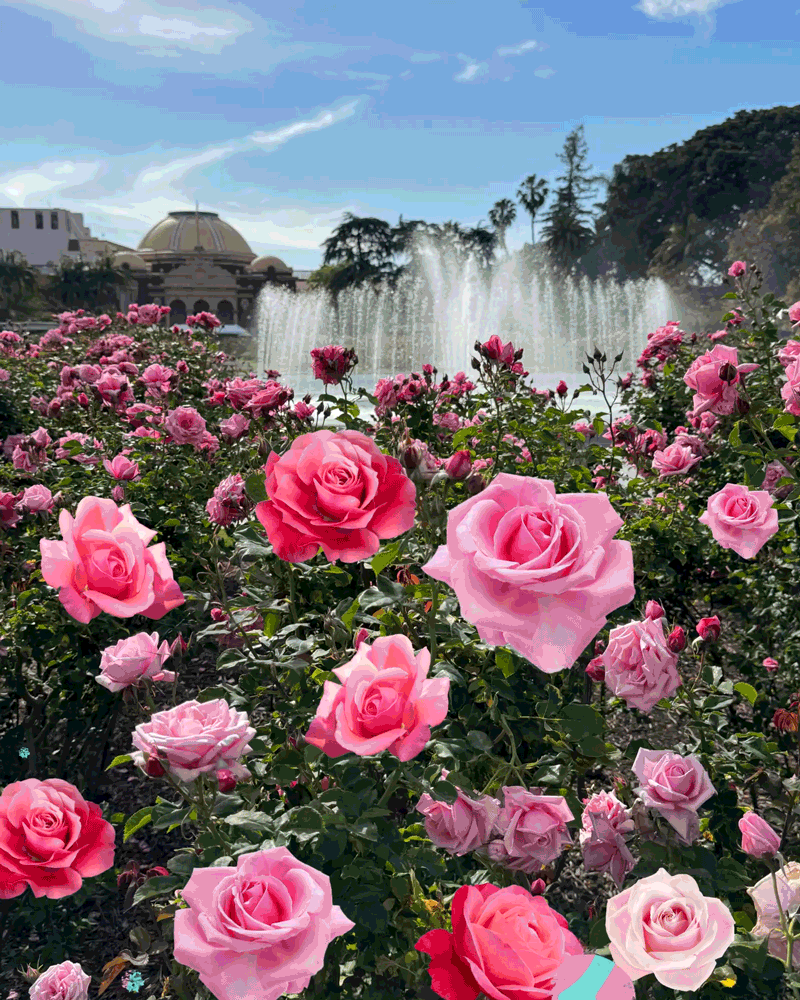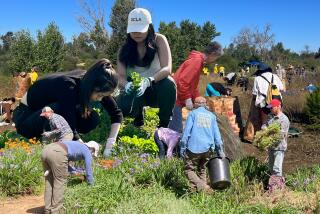Trying New Rose Varieties? Here’s Good Planting Advice
Rose growers often fall into two categories: exhibitors and gardeners. Exhibitors lavish all their attention and resources on producing a few perfect long-stemmed, classic blossoms.
Like parents of prodigies, exhibitors tolerate eccentric behavior and indulge crazy demands to coax perfect blooms.
Gardeners, on the other hand, are less compulsive about their roses. Their desires are more functional: they want roses that grow easily, look relatively good in the garden, and/or produce satisfying bouquets. They can’t bear to disbud because they treasure every blossom, even short-stemmed ones that have to be floated.
Recognizing these disparate camps, the American Rose Society annually polls its members asking them to rate new roses in two categories: exhibition and garden display. The results of this survey appear in “Proof of the Pudding,” the current edition that includes the ratings for 1987, 1988 and 1989 hybrid teas (HT), grandifloras (GR), floribundas (F) and shrubs (S).
I was particularly interested in the garden ratings, because my roses give me much pleasure but would rarely win blue ribbons. At the top of the list receiving the highest rating was Sexy Rexy, a new floribunda with profuse sprays of multipetaled, petite pink blooms. Other roses that ranked high for garden display were Mikado (HT), Touch of Class (HT), Prima Donna (GR), Bonica (S) and Cary Grant (HT).
The best parts of “Proof of the Pudding,” however, are the candid moments of rosarians regarding the new roses. They pull no punches, reporting good and bad qualities, something you’ll never find in catalogue descriptions. For a copy of “Proof,” send a $2.50 check made out to the American Rose Society, to Luis T. Desamero, Editor, 3053 Laurel Canyon Blvd., Studio City 91604.
Planting Bare-Root Roses
After reading about these wonderful new roses, I got the urge to remove a number of bushes that are no longer producing well in my garden and replace them with selections from the “Proof” list.
Although I’m not growing for exhibition, I do want my new bare-root roses to get off to a good start. So I asked an expert how he plants his roses, and I was startled by some of his advice. Thomas Cairns, who was recently recognized by the American Rose Society as Exhibitor of the Year for his outstanding roses at local and national shows, provided the following instructions (and comments) for planting bare-root roses in Southern California:
Begin by digging a big hole and preparing the soil before buying your roses. (Does it make sense to put a $10 rose in a 25-cent hole?) Amend the soil with one-third peat moss and one-third nitrohumus. (Don’t stint on start-up costs. First- and second-year performance depends on how well roses are planted and tended during the critical first four weeks.) Water the holes and leave them alone until planting time.
After purchasing your roses, remove the wrappings. Prune any broken or damaged roots but do not prune the canes just yet. Soak the bushes one to two days in a 5-gallon container filled with water and 1 tablespoon of Vitamin B-1.
Critical Initial Period
Place one cup of blood and bone meal at the bottom of each hole. Mound the soil at the bottom of the hole into a small pyramid. Arrange the roots over it so that the bud union is 1 or 2 inches above the soil level. (Don’t bury a rose’s bud union in Southern California!)
Now, mound soil or mulch 6 to 8 inches above the bud union--to protect it and the newly emerging buds from excessive transpiration. (Don’t let them dry out during this critical initial period before their roots are established.) Some nurseries provide a paper cone to be filled with soil to protect the bud union and lower canes.
Don’t prune the bush just yet, because this causes unnecessary transpiration at a time when the roots can’t handle it. Water the newly planted bush. After three to four weeks, spread 1 cup of rose fertilizer around the surface of the newly planted rose. Then remove the mounded soil/mulch and mix it with the fertilizer, helping to cover up the conspicuous granules. Now prune the canes lightly.
This routine, Cairns says, speeds a bare root rose to early productivity and ensures long life.






